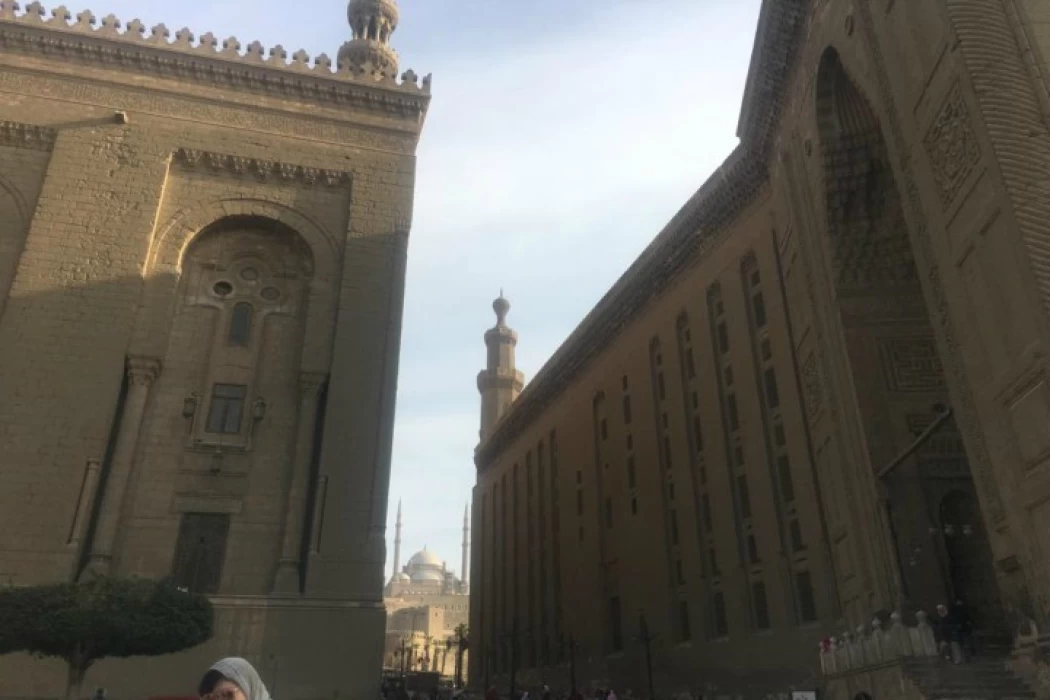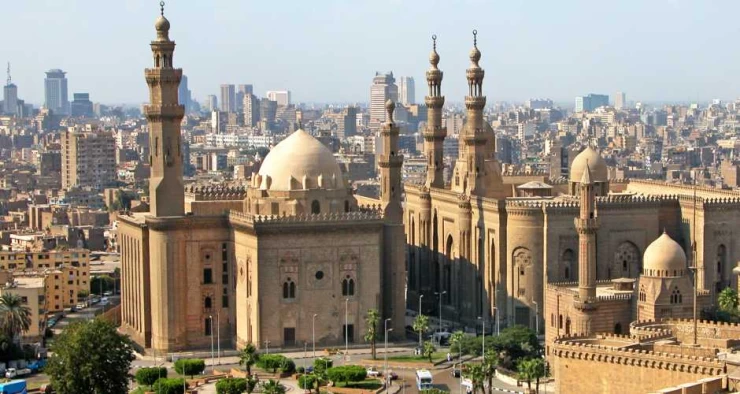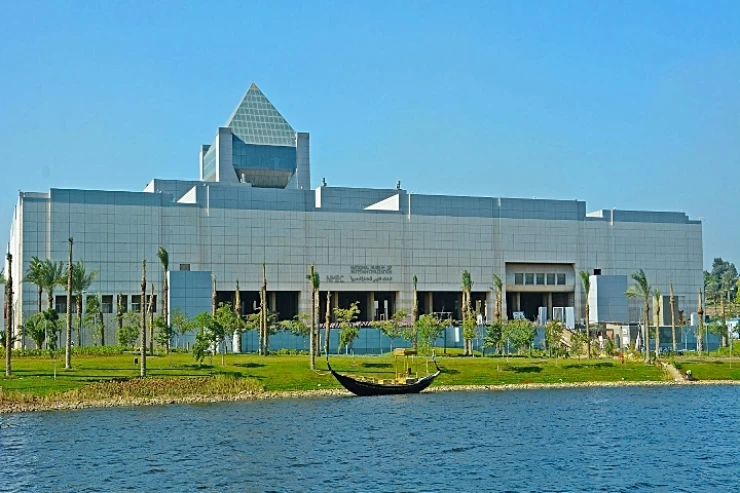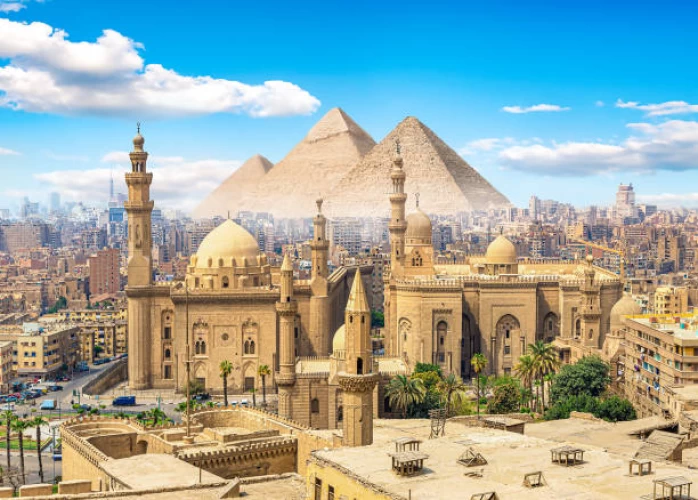
Комплекс Султан Хассан
Мечеть и медресе султана Хасана.
Комплекс Султана Хасана - уникален размерами здания, точностью изготовления и разнообразием декора, поэтому он заслуживает того, чтобы его называли архитектурным шедевром и гордостью древнего исламского искусства. О монументальной мечети "Гомар" говорится в книге, описывающей Египет. Это делает его важным пунктом в турах по Египту, поскольку он проясняет великую исламскую историю Египта Мечеть и Медресе Султана Хасана (Masjid al-Sultan Hasan Cairo).
Она является одним из самых красивых зданий Каира из-за своего высокого купола, высоты минарета, ширины, роскоши и убранства.
Комплекс Султана Хасана - величайшее сооружение в исламском Каире в дополнение к самой высокой двери, особенно между всеми мечетями и школами, сделало его очень уникальным местом. Комплекс состоит из мечети, школы и ночлежки для студентов и преподавателей, в нем есть четыре школы для обучения четырем исламским суннитским доктринам.
Мечеть Султана Хасана - прекрасное место, которое стоит посетить в любое время. Эта одна из обязательных мест для посещения в Каире особенно в исламском Каире или, возможно, во всем мире. Ее стены возвышаются на 36 метров, а самый высокий минарет достигает 68 метров. Темный проход с низким потолком ведет вас в теплый мерцающий двор. В центре двора находится куполообразный фонтан для омовений, который, вероятно, был османским дополнением. С четырех сторон двора расположены круглые айваны (гостиные), поддерживаемые свисающими цепями ламп и красно-черными ободками.
Знаменитый мамлюкский султан Хасан, основавший нашу мечеть, - сын великого мамлюкского султана ан-Насера Мухаммеда ибн Калавуна. Он правил два прерванных правления, первый раз в 1347 году, когда ему было 13 лет, и был свергнут другими мамлюкскими князьями. Второй раз - в 1356 году н.э., и прежде чем он успел покончить с властью князей и высших чиновников, они совершили против него революцию. Говорили, что он бежал из цитадели Салах Элдин, но его нашли и посадили в тюрьму, и больше его никогда не видели. Возможно, он был убит через 16 лет после восшествия на престол. Он оставил после себя 10 сыновей и 6 дочерей.
Мечеть была построена по системе школ, каждая школа считается маленькой мечетью, и каждая из них посвящена преподаванию одной из четырех исламских доктрин, "Шафи'и, Малики, Ханбали и Ханафи", самая большая из них - ханафитская.

Мамлюкский стиль архитектурного планирования отличает айван Кибла, который является самым большим из 4 айванов внутри мечети. Он сделан из мрамора. Перед киблой айван расположен (Деккат аль-Мубаллег), возвышающийся над 8 колоннами и 3 опорами. За михрабом в стене Киблы есть 2 двери, ведущие в купол мавзолея, где, как предполагается, похоронен султан. Площадь крыши мавзолея составляет 21 квадратный метр, а его оформление аналогично оформлению айвана Киблы.
Рядом с Мечетью Султана Хасана вы можете посетить :
Мечеть Ибн Тулуна.
Цитадель Салах Элдин.
Мечеть Аль-Азхар.
Ознакомьтесь с Исламским туром по Каиру, если вы планируете какие-либо туры в Египет или из нашего разнообразия туров из Каира.
Мы расскажем вам об особом месте в Египте, которое называется озеро Темсах или Крокодиловое озеро. Мы также можем провести вас по всем интересным и забавным местам.
The Mosque and Madrasa of Sultan Hassan is one of the most stunning examples of Islamic architecture in Cairo, and it is not surprising that the mosque is situated around the Citadel of Saladin, in the interior of Old Cairo. The complex embodies the epic proportions of Mamluk architecture and is famous for its great scale, beautiful intricate patterns and detail, and its past. Visitors around the globe make pilgrimages to the beauty and history of this architectural and cultural masterpiece, which is the pride of the Mamluk Sultanate.
Historical Overview
This mosque and khanqah compound construction was commissioned by Sultan Hassan bin al-Nasir Muhammad around the year 1356 AD, and he intended it to be more than a mosque as it would serve as a madrasa (school of study) for the four major Sunni sects of Islam: Hanafi, Maliki, Shafi’i, and Hanbali. The construction of the tomb was commenced in the 1356 Christian era, which took around seven years to complete. It was also used as a place to learn and worship. But the bad part was that, alas, within a matter of hours, after the Sultan ordered his last and grandest design, the Sultan was assassinated, thus enhancing the myth.
The complex was built in one of the cities that over the years have suffered many interruptions within its history, internally due to earthquakes as well as military sieges, some of which rendered its architectural design adversely. But it has remained a significant symbol of Mamluk rule and devotion and continues to be open for worship and visitors.
While the Sultan Hassan Complex has much to offer, its enormous scale is undoubtedly the most impressive feature. The main entry that is just under 26 meters in height leads to a courtyard that is surrounded by walls that rise to a height of 36 meters. The entire mosque covered about 7900 square meters, making it one of the biggest mosques in the globe. The building’s symmetrical stone elevation and rich use of geometrical decor and ornamental monuments are typical Mamluk architectural designs.
Also, within the mosque’s interior—except for the one iwab—which houses four schools of Sunni Islam and a large central courtyard, which is encircled by four iwans. The Iwan located at the center pointing to Mecca is enhanced with elaborate stucco work and marbles, as well as a decorated'mihrab.'.’ The courtyard is also properly arranged with the help of vertical members in the form of columns. The guests will also admire the lofty walls of the space, which have curved ceilings, creating an almost ethereal feeling in the room.
The organization, which is popularly referred to as the madrasa or Islamic institution in its primary sense, was one of the objects of the original vision of the complex. So all four iwans also served as classrooms for one of the Sunni judicial schools. This period also explains the presence of such illustrious personages in the inner chambers surrounded by students hailing from every corner of the Muslim world due to its esteem as the pinnacle of education.
The institution committed to the good health of its students as well. This implied that in addition to regular classes being offered, nutrition, dormitories, and a reading room were also provided to the students. The madrasah is covered by Koranic verses placed on the walls as ornaments and motivational resources for the student scholars who were within its confines.
Equally intriguing is the tomb of Sultan Hassan, which is another distinguishing element of the Sultan Hassan Complex. The tomb is in the back of the main prayer room and is said to be one of the best preserved examples of Mumluk burial architecture. The dome is surmounted by a giant dome that is 21 meters in height and is embellished with beautiful arabesques and inscriptions. Based within the mausoleum, there lies the sarcophagus of Sultan Hassan, encased in walls of marble embedded with Mamluk-style masterpieces.
Interestingly, Sultan Hassan’s body was never interred in this mausoleum, as he was killed before the complex was completed, and his remains were buried elsewhere. Nevertheless, the mausoleum remains a symbolic resting place and is a beautiful tribute to his memory.
The Sultan Hassan Complex is a superlative work of Islamic art and architecture, with every detail thoughtfully designed and executed to fit the Mamluk style. The walls and ceilings are clad in arabesques, geometric designs, calligraphy, and other typical components of Islamic art. The fishtail and stucco carving works, embellished on the surfaces, unequivocally demonstrate the exceptional artistry that went into building the entire complex.
Among the dominant artistic aspects, one cannot miss the beautiful wooden mashrabiya, which has elaborate floral and geometric carvings in it, encouraging the eye to explore its design. In addition to enhancing the beauty of the complex, these screens also provide ventilation as well as privacy. Another thing that adds beauty to the mosque is its mihrab, which is made of marble and embellished with decorative panels and mosaics that instill a certain level of spirituality.


















